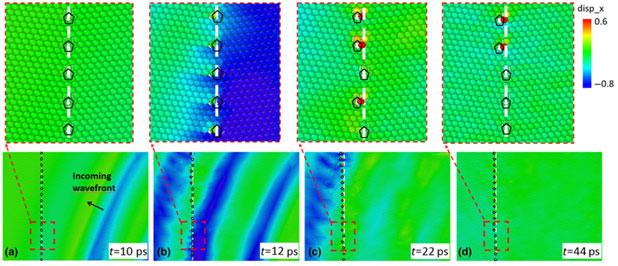Crossref Citations
This article has been cited by the following publications. This list is generated based on data provided by
Crossref.
Xu, Shuozhi
Rigelesaiyin, Ji
Xiong, Liming
Chen, Youping
and
McDowell, David L.
2018.
Generalized Models and Non-classical Approaches in Complex Materials 2.
Vol. 90,
Issue. ,
p.
237.
Xu, Shuozhi
Payne, Thomas G.
Chen, Hao
Liu, Yongchao
Xiong, Liming
Chen, Youping
and
McDowell, David L.
2018.
PyCAC: The concurrent atomistic-continuum simulation environment.
Journal of Materials Research,
Vol. 33,
Issue. 7,
p.
857.
Xu, Shuozhi
and
Chen, Xiang
2019.
Modeling dislocations and heat conduction in crystalline materials: atomistic/continuum coupling approaches.
International Materials Reviews,
Vol. 64,
Issue. 7,
p.
407.
Hickman, J.
and
Mishin, Y.
2020.
Thermal conductivity and its relation to atomic structure for symmetrical tilt grain boundaries in silicon.
Physical Review Materials,
Vol. 4,
Issue. 3,
Hu, Ming
and
Yang, Zhonghua
2021.
Perspective on multi-scale simulation of thermal transport in solids and interfaces.
Physical Chemistry Chemical Physics,
Vol. 23,
Issue. 3,
p.
1785.
Davis, Alexander S.
Lloyd, Jeffrey T.
and
Agrawal, Vinamra
2022.
Moving window techniques to model shock wave propagation using the concurrent atomistic–continuum method.
Computer Methods in Applied Mechanics and Engineering,
Vol. 389,
Issue. ,
p.
114360.
Yang, Zhonghua
Yuan, Kunpeng
Li, Nan
Zhang, Xiaoliang
and
Hu, Ming
2022.
Giant Manipulation of Phonon Hydrodynamics in Ferroelectric Bilayer Boron Nitride at Room Temperature and Beyond.
ACS Applied Energy Materials,
Vol. 5,
Issue. 7,
p.
8781.
Selimov, Alex
Chu, Kevin
and
McDowell, David L.
2022.
Coarse-grained atomistic modeling of dislocations and generalized crystal plasticity.
Journal of Micromechanics and Molecular Physics,
Vol. 07,
Issue. 02,
p.
103.
Chu, Kevin
Diaz, Adrian
Chen, Youping
Zhu, Ting
and
McDowell, David L.
2022.
Multiscale Concurrent Atomistic-Continuum (CAC) modeling of multicomponent alloys.
Computational Materials Science,
Vol. 201,
Issue. ,
p.
110873.
Davis, Alexander S.
and
Agrawal, Vinamra
2023.
Investigating shock wave propagation, evolution, and anisotropy using a moving window concurrent atomistic–continuum framework.
Computational Mechanics,
Vol. 71,
Issue. 4,
p.
721.
McDowell, David L.
2023.
Nonequilibrium statistical thermodynamics of thermally activated dislocation ensembles: part 3—Taylor–Quinney coefficient, size effects and generalized normality.
Journal of Materials Science,






